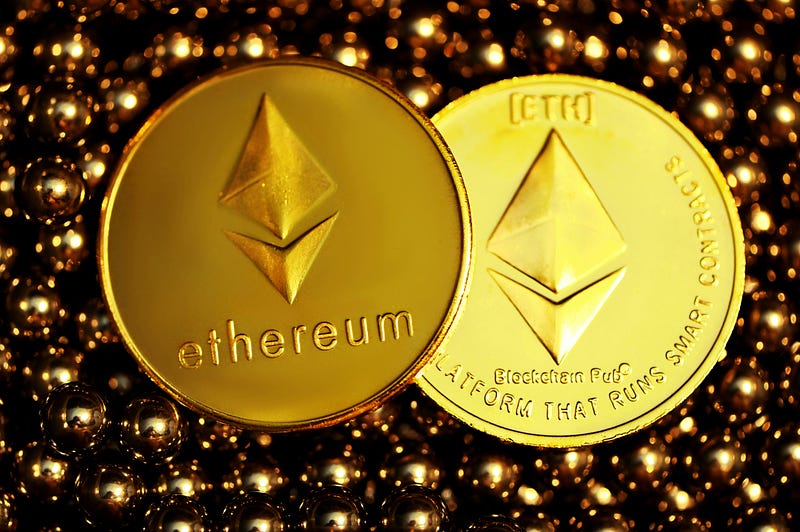What will ETH treasure companies do to ETH financial protocols?
ETH demand is through the roof, will ETH defi generate beta on top of that?

ETH demand is through the roof, will ETH defi generate beta on top of that?
After the success of companies such as Stragey (MSTR), there is a significant new investment trend that people are calling the “Ethereum Treasury Strategy.” This involves a new wave of public companies raising hundreds of millions of dollars to acquire Ethereum (ETH). We see this as a pivotal development that will create sustained buying pressure for ETH and inject billions into ETH’s Decentralized Finance (DEFI) ecosystem.
And the number of ETH treasury companies is increasing. If you have not been living under a rock, you probably heard that the demand for ETH is through the roof.
Why are these companies booming? Well, there are places in the world that you cannot buy crypto directly. There are institutions such as pension funds and family offices that cannot buy crypto because of their mandate.
The strategy is that these companies provide a bridge for traditional market investors to gain crypto exposure. More importantly, they won’t just hold ETH; they will actively deploy it within the ETH DeFi protocols for staking and lending, generating additional revenue. This is expected to cause a surge in the Total Value Locked (TVL) across DeFi, directly boosting the revenues of these protocols.
Therefore there is investment opportunity in the underlying DeFi protocols that are native to ETH, run on ETH, make profit on ETH.
The link between ETH and the DEFI is clear, all the useful financial services you find in the real world like banks, lending shops, or investment programs also exist in ETH.
And note, this is a major game changer to holding a blockchain when compared to holding Bitcoin, because since these protocols, i.e., Aave, Rocket Pool, Lido, Y.fi and Sky are actually being employed in real transactions, colleting fees, colleting spreads in liquidity pools, lending and borrowing.
For example, Aave is the digital equivalent of a community bank where you can deposit your ETH to earn interest or borrow money.
So, aave is one of the protocols that are already seeing a increase in fees and revenues as the chart below from defiLlama.com shows.

Rocket Pool is very similar to a savings account that pays you your ETH deposits while you actually help the blockchain run smoothly (staking).
Lido historical revenue and fees also from defiLlama.com

So, think of Ethereum as the foundation, while these protocols operate within it, all using ETH to function.
These financial protocols are poised to capture this new wave of capital, since the ETH Treasure Companies and ETH (and ETF’s when given the regulation green light) will not pass the yield opportunity that ETH presents, so while you hold ETH for the long term adoption increase, you get paid to wait, in form of yield that their ETH when put to work can generate. Now, these ETH will be put to work in a finance protocol that exists in the ETH ecosystem. These protocols are also tokens of the ETH ecosystem.
Now, because we are in the second inning of the crypto revolution only, and their scope is within a niche sector that, while having a lot of growth potential, these are small players.
Think of this as 1996 internet websites with a lot of potential and risks. While some may turn out like altavista.com, others may stick around longer like yahoo.com, and a few could become a defi google. So the risks are there, of course, but with a caveat: a lot of these protocols are programmed with using the revenue from the fees they collect to buy back their own token, similar to a stock buy back program you are used to come across in the major US companies. This is known as “burn” mechanism.
When choosing a token from a protocol to invest, its core tokenomics is a very important aspect to analyze. There are tokens with hard caps such as the famous 21 million supply cap for Bitcoin, there are tokens that are inflationary, meaning they are not limited to a hard supply cap, and there are tokens that have implemented “burn” mechanisms
Our focus is on protocols that are already profitable and use their revenue to buy back their tokens. This buyback mechanism establishes a direct correlation between increased usage and a higher valuation for their native token. Remember, the greater the ETH interest, the greater the incentive to look for yields from these protocols, the greater the ETH ecosystem financial protocols revenue, the greater their buyback ability is.
Based on this, several protocols are positioned to benefit. As capital from the new treasury companies flows into ETH, these platforms, their revenues and token buybacks could increase, presenting a clear growth opportunity for investors who are paying attention. The following table presents some tokens that could benefit with their current annual fee revenue as a percentage of their market cap.

- Note on Sky (Maker — MKR): The transition from Maker (MKR) to the new Sky ecosystem is ongoing. The tokenomics listed reflect the established MKR model, which includes the prominent buy-and-burn mechanism. The hard cap is dynamic due to the burn feature.
Disclaimer: The information provided in this document is for informational purposes only and is not intended to be, and shall not be construed as, constituting financial, investment, legal, tax, or any other form of advice. The content herein does not constitute a recommendation, endorsement, or an offer or solicitation to buy or sell any securities or to engage in any particular investment strategy. While the information presented is believed to be reliable, we make no representation or warranty, express or implied, as to its accuracy, completeness, or suitability for any specific purpose. All readers are strongly encouraged to perform their own independent due diligence and to consult with their own qualified professional advisors to determine the suitability of any investment. The authors and publishers assume no liability for any loss or damage resulting from the use of or reliance on the information provided.


